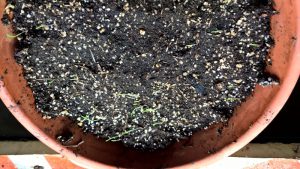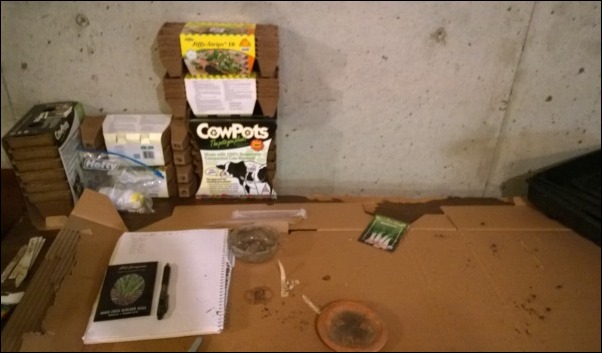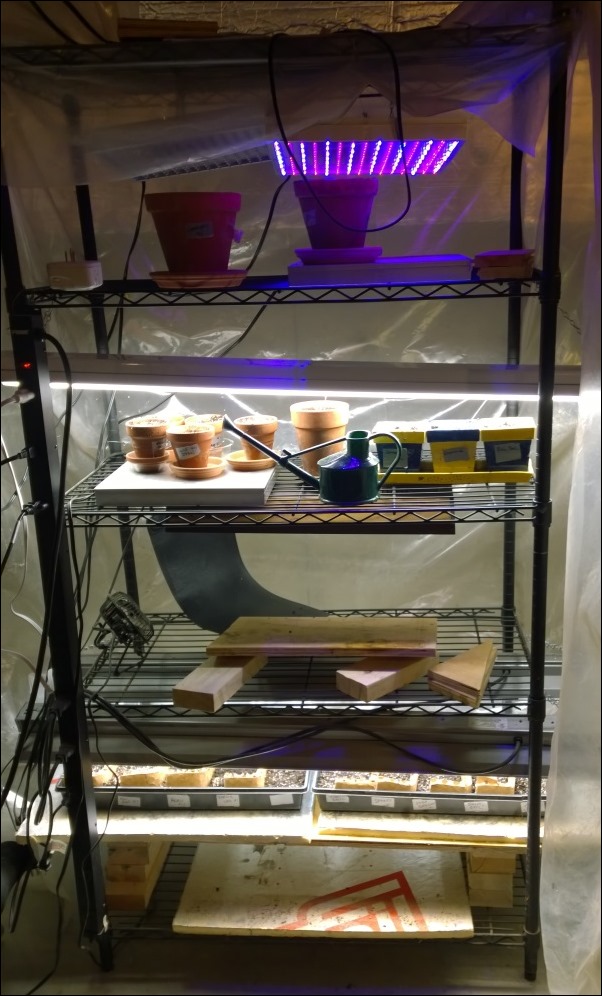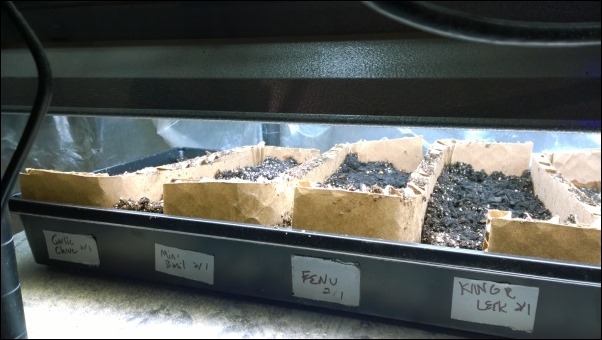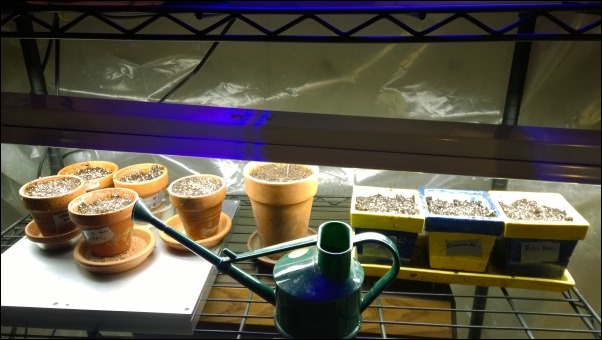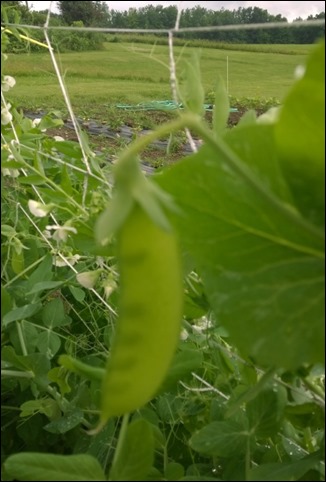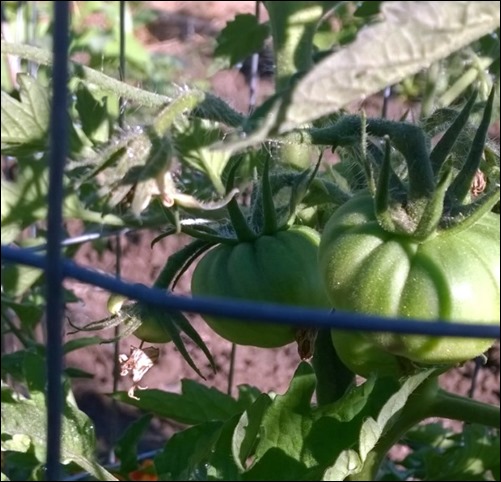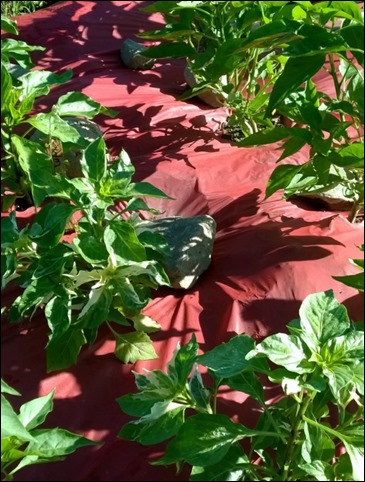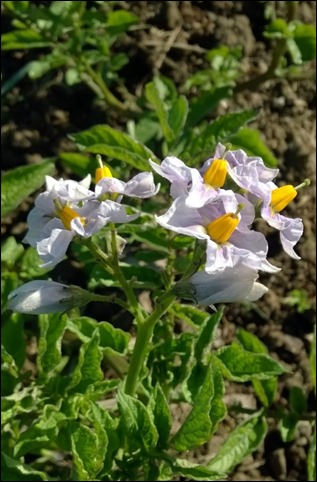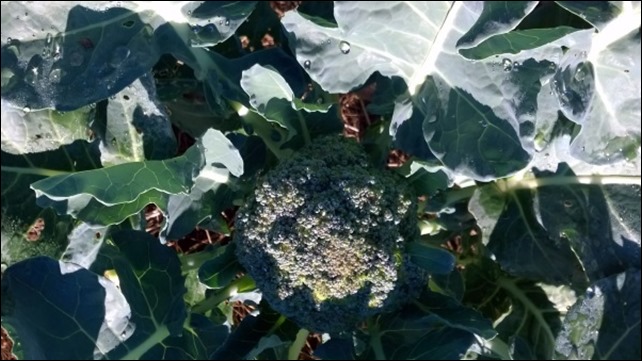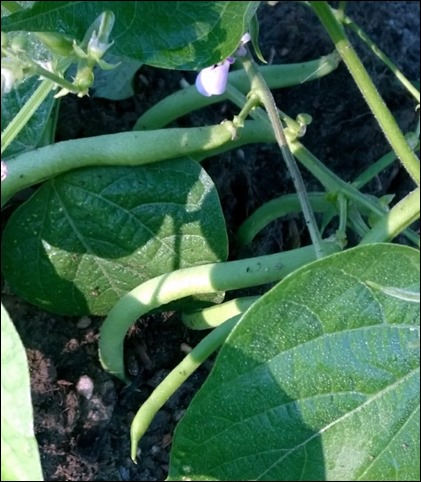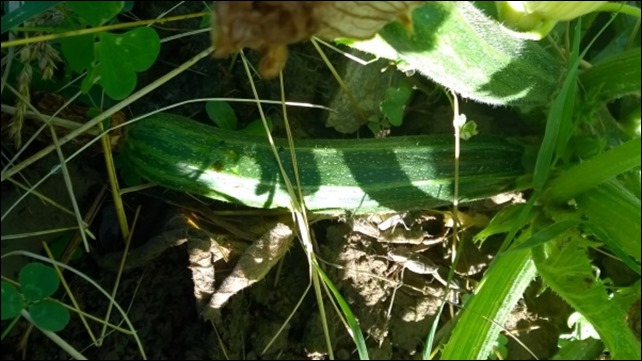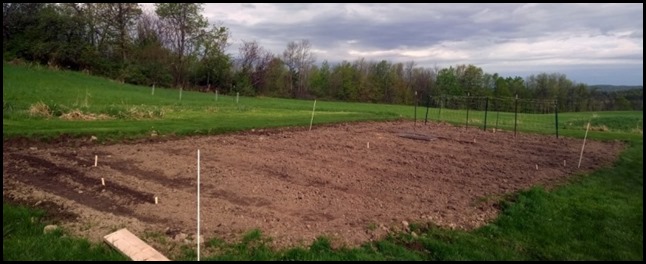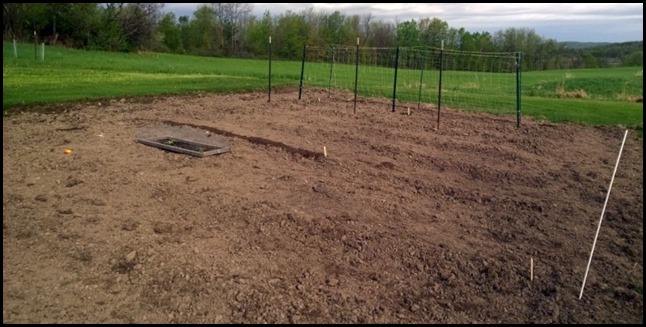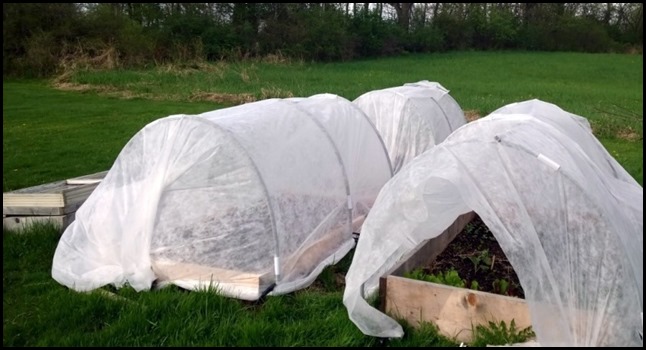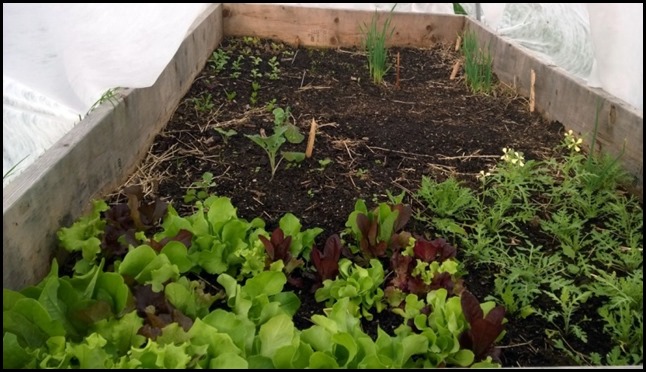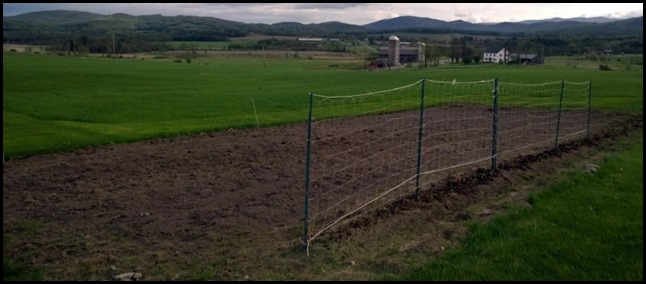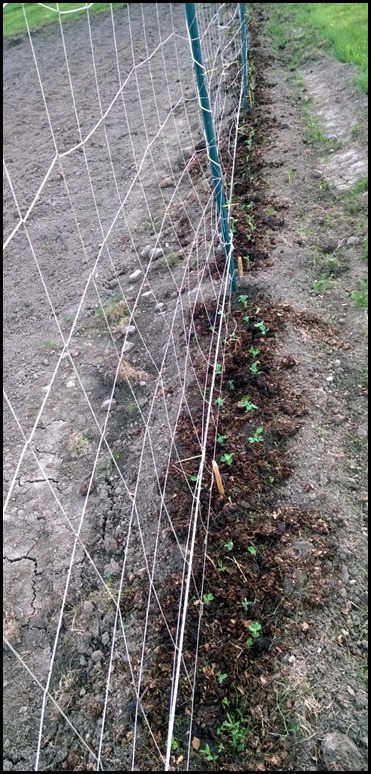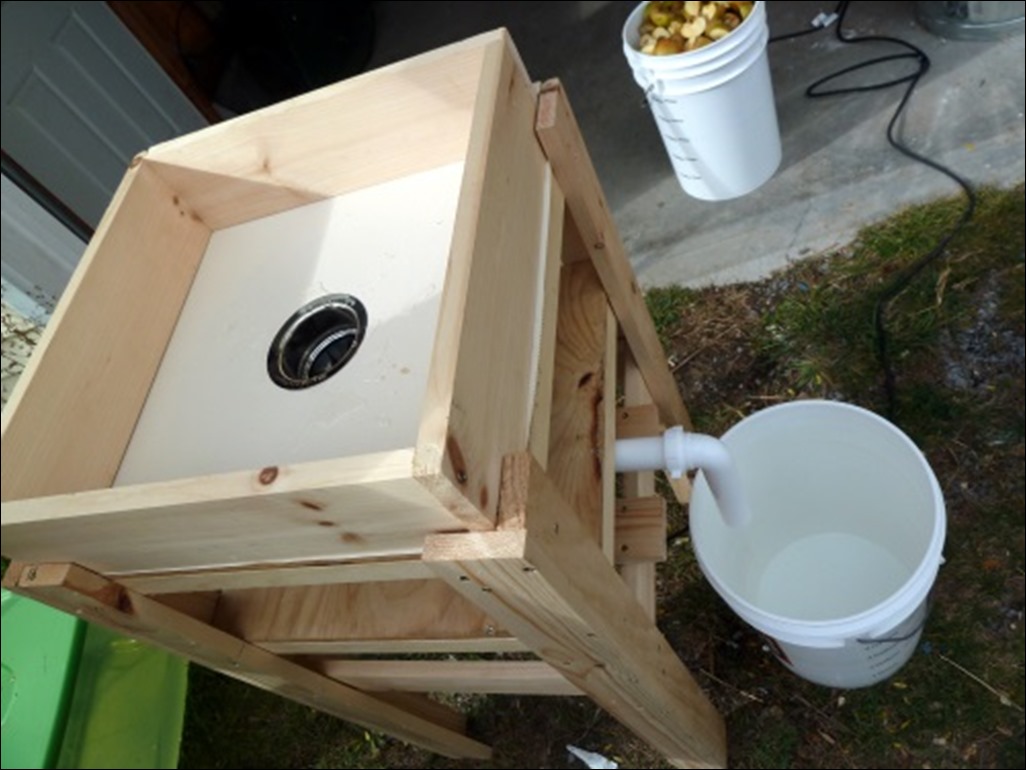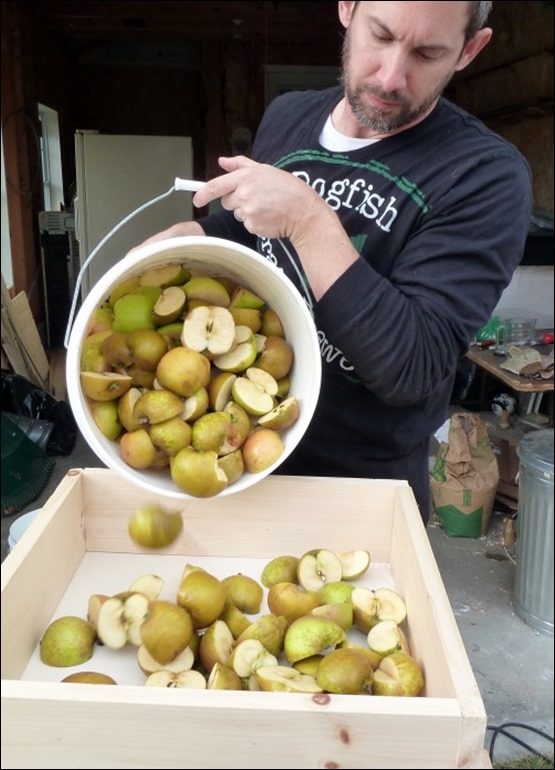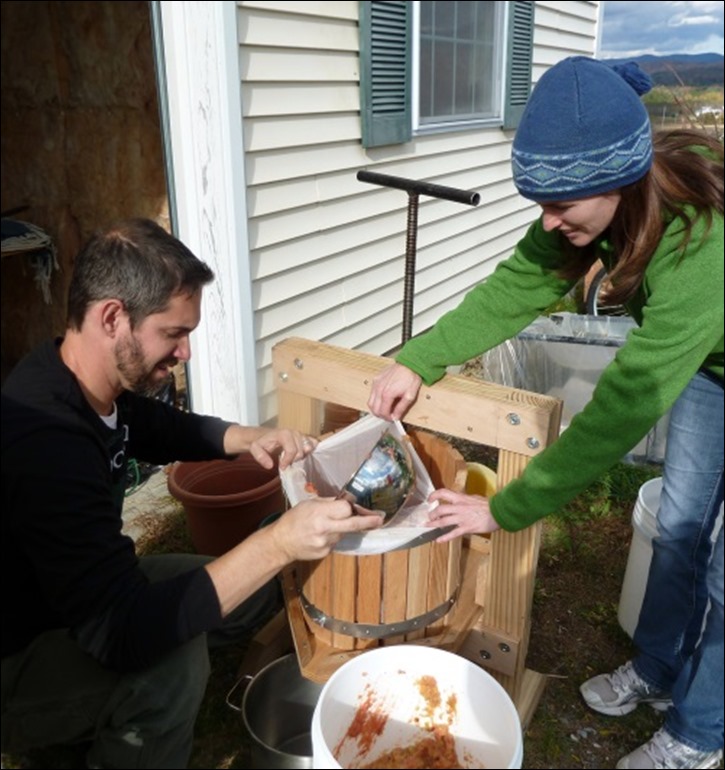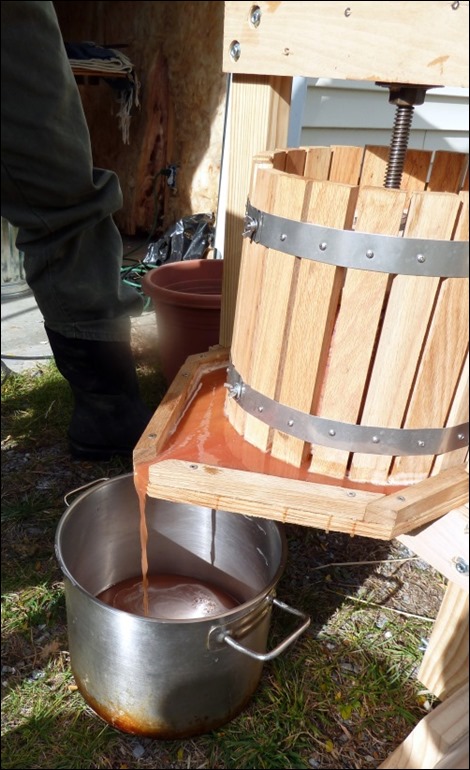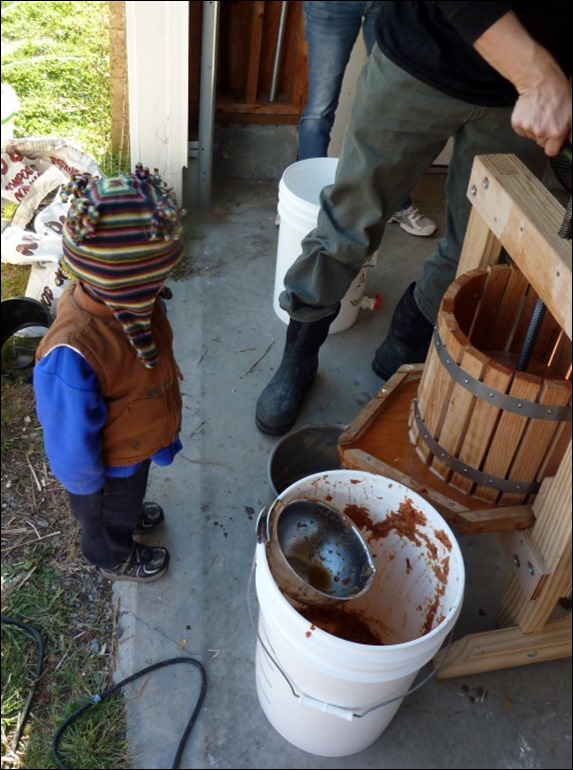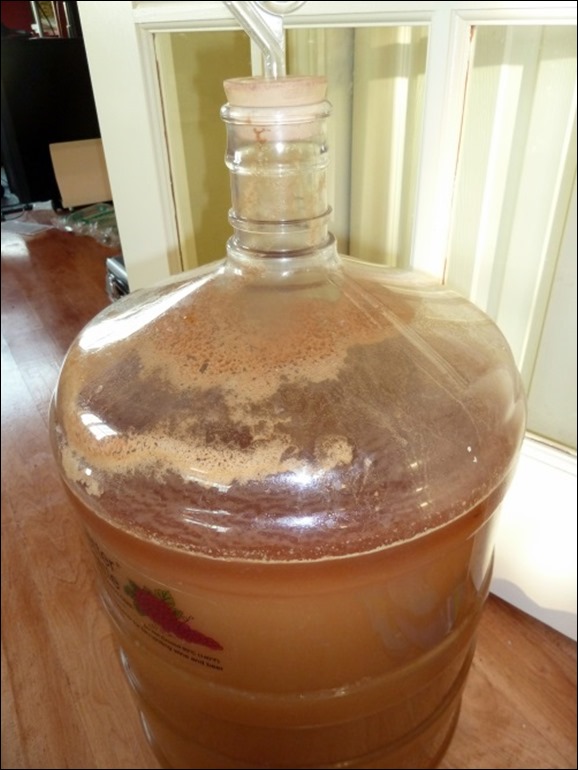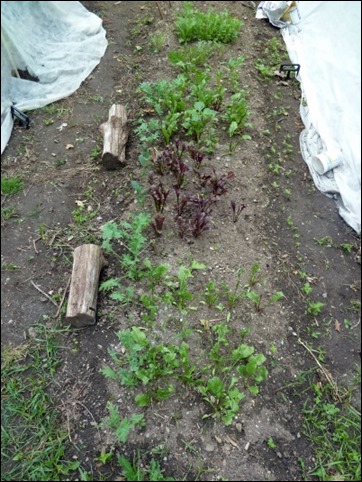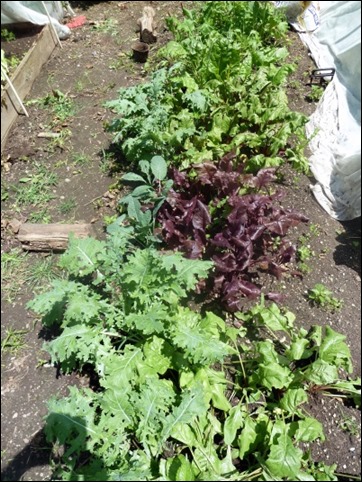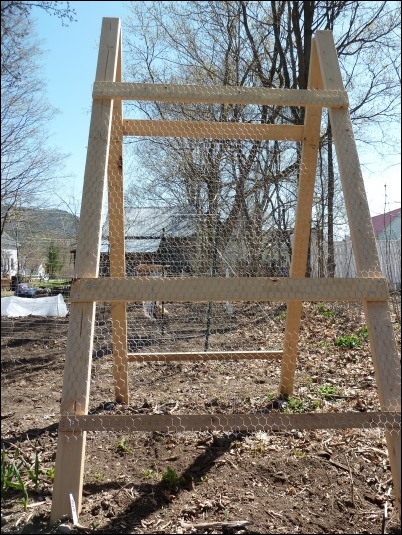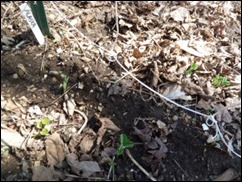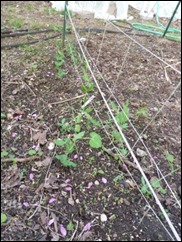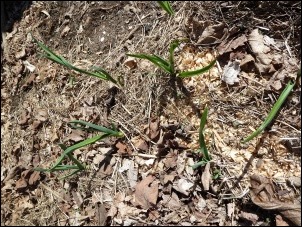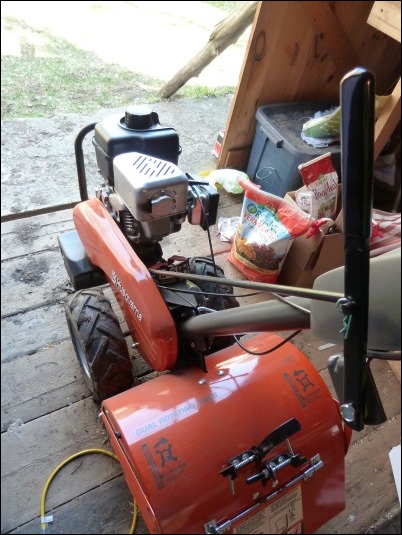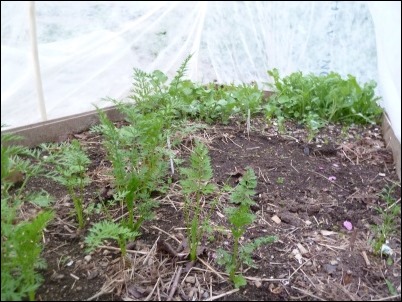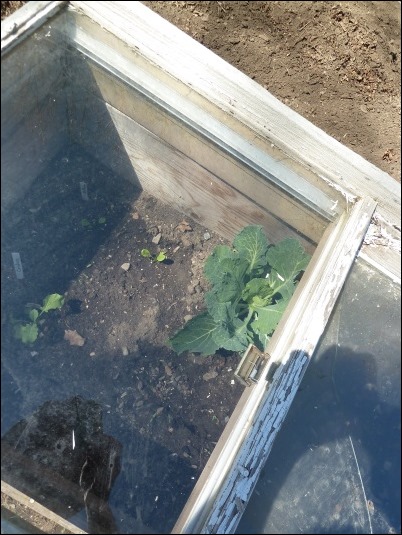Since we hope to have a greenhouse this season, I’m going to take a shot at getting some lemongrass to grow. Getting some sprouts, so we’ll see what happens.
Seed starts
Well, it’s already that time again. Starting seeds marks the beginning of the gardening year. We already have most of our seeds ordered. It’s still a bit early to start most things, but I am starting some herbs and flowers since they can sometime take awhile to get going and actually will do ok inside for a few months.
I’m also hoping to buy a small greenhouse this spring, so I’m hedging my bets that I’ll be able to move some things out there and get them acclimated with more true daylight earlier in the season. Should lead to more robust starts that can be planted sooner.
Here’s our seed starting space in the basement.
Here is a full view of my growing rack. I would like to add a few more lights this year.
This year I’m trying to start some seeds more by broadcast right in the tray and then transplant the viable starts into the individual cell trays that we usually use. The cell trays have been problematic because typically not all the seeds germinate. So you replant and have seeds at different points of progress or you forget whether you’ve re-planted or you wait several cycles for germination and so on.
Some of the flowers and herbs I’m doing directly in a small pot instead. The small green watering can you see in the photo has worked great, it has a very small spout and face that is very gentle on young plants. Highly recommended as this is much easier than trying to use a spray bottle. You can get it from Amazon.
Next up in a few weeks, brassicas, tomatoes and peppers.
2014 Year in Review
Well, between keeping up with all the projects and having a new baby, this blog has taken a bit of a hit. So this post won’t be too lengthy, but wanted to do a quick bullet point list of stuff we managed to accomplish this year.
- Poultry
- Built a brand new chicken coop based on Fresh Air Poultry Houses, large enough for 15 chickens or so.
- Lost one of our original hens, but picked up 6 new ones.
- Got our first blue eggs.
- One of the 6 new “hens” turned out to be a rooster (the Cuckoo Maran). He is still on probation until we determine if he’s going to be nice and helpful or a pain.
- Built a duck coop and planned to get ducks, but that didn’t happen this year. Hopefully next year.
- Set up solar for the new coop, which I still hope to blog about at some point. It’s struggling a bit now with the limited daylight and snow/ice, but I think overall will work well for lighting. Would eventually like an automatic door as well.
- Gardening
- Put in 2 brand new garden plots. They did okay considering it was the first year, although we still have a lot of soil consistency and wetness issues to work on.
- Started 4 blueberry bushes, 25 asparagus crowns (of which about half made it) and 75 strawberry plants (3 different varieties of 25 each).
- Had some luck for the first time with the following this year
- Melons
- Pumpkins
- Leeks
- Eggplant
- Gourds
- Popcorn
- Sweet peppers
- Standouts included
- Potatoes (despite web conditions and compacted soil)
- Brassicas (broccoli, cabbage)
- Some of the tomatoes
- Soybeans
- Flowers – we had decent luck with various flowers this year, including sunflowers, that we’ve struggled with before.
- Peppers, although I always want more variety and quantity
- Still can’t seem to get Brussels Sprouts to work.
- Our cucumbers and squashes mostly succumbed to a vicious onslaught of insects. Need to do a bit more row cover and other stuff next year.
- Landscape and other property work
- Got a riding mower and shed to store it in.
- Planted 4 apples trees.
- Had a full landscape design done that we are really excited about implementing over the next 5-10 years.
- Built 2 bay compost bin
Lots of plans for next year that I may get into in another post. Soon it will be time to buy and start seeds. By the way, if you are thinking about seeds, don’t forget about my new site PickAPacket.com and tell your friends. It allows you to compare prices and see varieties carried by 13 of my favorite non-GMO seed companies, including lots of heirloom, organic and open-pollinated varieties.
State of the garden
Well, it’s already July and I’ve been so busy working I haven’t had much time to blog about it. The short story is our gardens are overall doing fairly well, considering it is the first year. We are certainly fighting weeds, but that happens regardless. The soil structure is definitely better in the front garden, where we dug up a spot that was more hay pasture than lawn. Both need a lot of work, particularly when dry. After a rain though, the soil really isn’t too bad and I think with some tender loving care in a few years we’ll start seeing some pretty good structure.
We had a chance to plant more peas this year and focused more on sugar/snap peas, since you get a lot more for the space and they are easier to freeze for later. Ezra has taken a big liking to peas, particularly shell peas which he eats raw by the handfuls. On most days he has to go “check his peas” and is actually already doing a pretty good job at learning when they are ripe. It’s pretty cute.
It’s been pretty interesting to see the difference having lots of direct sun makes. It’s mostly a good thing, although we had a couple of issues with transplanting where the plants got some sun scald. We’ve always had to worry more about wind or temperature than sun before. The tomatoes I am especially happy with and we’ll see if the actual harvest lives up to the expectation. But this is the first year I’ve been relatively happy with my tomato (and pepper) starts. We should start seeing some ripe tomatoes here shortly, there are a bunch off small green ones on the vines.
Here are some nice jalapeno plants, with some sweet basil in the background.
More peppers, including the “fish” peppers in the foreground. We use red plastic mulch to help reflect more of the good light spectrum that peppers (and tomatoes) love. Still trying to determine how much difference it makes.
Potatoes are coming along nicely and we had our first red new potatoes the other night. We have a nice variety planted, including several different fingerling varieties. This year we decided to try seed potatoes from Wood Prairie Farm in Maine. Jim Gerritsen has a reputation as one of the top organic potato experts in the country, so curious to see how these do. I think this may be a hit and miss year, with the soil structure not being super loose the way potatoes like.
A lot of folks don’t realize potato blossoms are some of the prettiest flowers you’ll ever see in your garden, check out this fingerling variety in bloom right now.
Here are a few other things that are starting to come into harvest. This is the time when all the hard work starts to pay off and you actually see some results from the labor, so I love this time of year.
One of our first broccoli crowns.
First bush beans, a variety we discovered last year and really has become one of our go-to beans: Provider
And of course the first of probably too many zucchini.
Gardens from scratch
We’ve just about got our two garden plots in shape and have started some planting. Took a lot of tilling and it’s still not great. With the clay soil it is either too wet and mucky or it’s dry with hard clay balls. So going to need a lot of amendments, but we knew that. I’m making semi-permanent raised rows, which should help with drainage and give us a place to focus our compost, manure and other nutrients.
Here’s a few shots of what we’re starting from.
Slightly closer look at the rows.
We’ve got three raised beds with row cover going now.
It’s been really warm for the last week and plants are suddenly taking off. I had to mow the lawn already. The lettuce seems happy. This is lettuce I started indoors in February or March.
Here is a view of the front garden, which will mostly be perennial berries, asparagus, etc. We’re using it this year for a few other things, like peas, pumpkins and potatoes.
And one last shot of some peas that appear to be thriving despite the conditions.
Announcing PickAPacket.com–a new way to find sustainable seed options
Over the past few years I’ve been thinking about an idea to help me track down seeds from my favorite vendors. Near the beginning of each year we get a number of seed catalogs. I love looking through them in the cold winter months, getting a sense of all that is available, new varieties and picking new things to try.
We typically figure out exactly what we still have in inventory and then decide what we need to order. Most of the seed vendors now have excellent web sites to order online. I wanted a way to quickly figure out who has what variety and potentially compare prices. Often we have specific varieties in mind and not all vendors carry that type. We buy a lot of seeds, so we think about price as well. We typically put more stock in the success we’ve had with a particular vendor or variety, as well as how adapted the seeds are to our area.
Although you can find single varieties somewhat easily through Google or Bing now, it’s still a laborious process if you want to compare varieties or do a lot of research quickly. I’m also only really interested in vendors who support the ideals I believe in: no GMOs and a focus on any mixture of organic, heirloom, open-pollinated and generally sustainable options. The only way I really know to accomplish this is to pick vendors I believe in and then crawl their sites to determine what is available. So I wrote a specialized web crawler that does just that. The results are now available at Pick A Packet.
I have some ideas for additional features, but for now it is a limited feature set. I want to make sure the seed companies appreciate the idea of this as a resource before putting too much additional effort into it. I also want to see if anybody else finds this helpful or just me. If so, some ideas for future features include social elements (I’m growing this in this area), ratings of success with particular varieties, ability to share photos of specific varieties (both plants and final crop) and helpful resources on the ideas the site is about (GMO issues, open-pollination, heirloom plants, seed saving, etc.). I would appreciate any feedback or idea you have on any of these ideas or the main concept of the site.
Please share this with any gardening friends you may have. I hope you’ll find it useful.
Post move update
As you might expect, life has been pretty busy since our move. Fall went pretty quick and now we are already headed into winter, so work outside will slow down for awhile. Here are a few of the things we’ve been working on.
- We put in an herb spiral. I’ve always found the idea of these one of the most interesting and accessible permaculture concepts. We have some rocks scattered around the property, so I was able to build this with a combination of repurposed bricks and rocks.
- We had one little hoop in a raised bed for the fall. Got quite a bit of lettuce and other greens out of it into November. Also some radishes and Hakurai turnips. The last part of November was fairly cold here, so not much is still growing now. But there are also carrots and bunching onions that should come back and continue to grow in the spring theoretically.
- Kristin is experimenting with the concept of a couple of “lasagna” plots, which is basically where you build up a raised bed using various materials (grass, straw/hay, food waste, chicken shavings/manure, spent beer mash, etc.) It’s basically building a compost pile, letting it sit over the winter and early spring and then planting directly into it. We have two of them going so far, both a standard 4’ x 8’ size that we settled on for raised beds. Makes it easy to use scrap dimensional lumber for frames and the hoops fit over them nicely.
- We dug up another section in our back pasture and planted garlic. Our tiller really struggled with getting anywhere with our dense pasture grass sod. It took about 8-10 runs to break the ground into anything useable. So we may need to get some sections of the properly plowed at least once to get certain things started, like asparagus, strawberries, etc.
- I just planted a couple of hazelnut bushes from the Arbor Day Hazelnut Project. They are developing hybrid bushes that can grow in a much wider range of climates, hopefully over most of the US instead of mainly in a small area of the Pacific Northwest. I also started our windbreak with 10 Norway Spruces from Arbor Day. Eventually I want to build up a substantial windbreak on the north and east sides of the house and along the lane, with a mix of evergreens and deciduous trees.
- We did a bunch of efficiency work on the house, including blowing cellulose into the attic which was never done for some reason. We also insulated the basement above grade for now as well as our bulkhead door, with the intent of eventually putting foam board on the entire set of walls in the basement. This may not be necessary and foam board is pricey, so we’ll see how it goes. The basement is already noticeably warmer. We would like to eventually put in another heat source, such as a pellet stove. We have a fairly efficient oil furnace, but I don’t like having that as my only option and it’s certainly not the cheapest way to go for a house of this size.
This winter I hope to do a few small projects, including building a larger chicken coop using the principles in Fresh Air Poultry Houses. We also still have some odds and ends to wrap up in the master bath, painting to finish in the upstairs and some electrical work to have done. I hope to get some additional storage and a workbench/tool area set up in the basement, now that we have some of the insulating done.
I’ve ordered my first 4 apple trees for spring delivery and we’ll need to start thinking about strawberries, blueberries, asparagus, rhubarb and additional trees for windbreak to plant in the spring. Plus our normal seed starting and the fun we always have looking though all our seed catalogs. This year we’ll finally be able to grow some things we didn’t have room for in the past, such as sweet corn, melons, pumpkins and lots of other things. Not sure we’ll get to all that in the first year, but we’ll do what we can like we do every year.
2013 Cider Press
After last year’s experiments with cider, I wanted to ramp things up a bit and get a better process. I’ve had plans for Herrick Kimball’s Whizbang Apple Grinder for awhile now, which basically repurposes a sink garbage disposal with a better motor in order to make a great apple mash for pressing cider. With all the other new house projects, we were already well into this year’s apple crop before I realized I was running out of time to put together a grinder this year. So I quickly started ordering parts to build the grinder. The grinder itself is not that difficult of a project to put together, once you have the right materials. So I was able to finish that up this past Saturday morning and it looks like this.
On Saturday afternoon, we attended a local CiderFest at Happy Valley Orchard, one of the local orchards where we like to get apples. They have teamed up with Citizen Cider, a local hard cider company and have quite an operation going over there. Super nice folks too, with a well maintained orchard.
I decided to use their drops for my cider and they had them in abundance this weekend, so we decided to go ahead and grab our apples while we strolled through the orchard and sipped on some Citizen Cider. They directed us to the section of the orchard where they have a few heirloom varieties and we scored a nice selection of Russets (probably Roxbury Russet and Golden Russet) as well as a large golden variety (Grimes Golden perhaps) and a few others. We rounded out the base of the cider with Jonagolds, Macs, Red Delicious and Honeycrisps, as well as a few others. We were able to score 2 1/2 bushels in about 20 minutes and many of the drops were in fantastic shape, all for only $4.50 a half bushel bag. Can’t beat that.
Sunday afternoon we started prepping the apples for pressing, which consistent of a quick wash and brush and quartering the apples. This went pretty quickly, considering how many apples we had. We weighed as we went to get a sense for how many apples overall, as well as how many of particular varieties. We threw in some crab apples from a Bristol neighbor’s tree and a few from a tree on our new property. We ended up with about 88 lbs. of apples.
After a brief scare with the grinder that just involved tightening up the shaft coupler, we were off to the races grinding all the apples.
The grinder worked magnificently, chopping apples about as fast as we could push them in.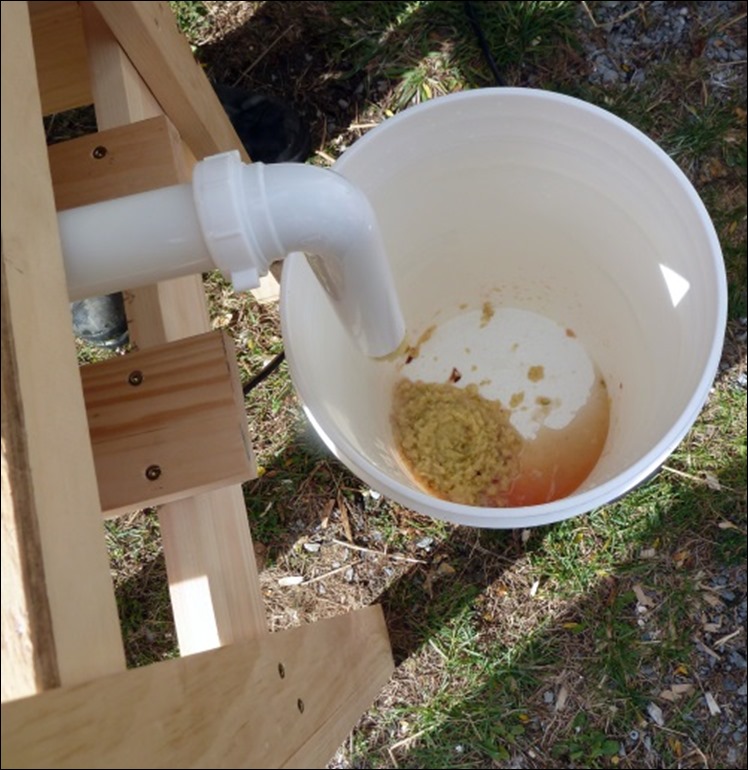
The yield when using this grinder was a night and day difference from our attempts last year, where we used a Cuisinart food processor since we didn’t have anything else. As soon as we loaded the mash into the bag, juice started flowing. Below our friend Christine who is visiting for the weekend helps load the pressing bag.
Check out the lovely flow of cider.
Ezra provided some management and quality assurance.
I was aiming for at least 5 gallons to ferment this year and we blasted well past the goal. I couldn’t believe the great yield we got using this mash. The only thing I want to try different is to use multiple bags with some pressing rounds between them. It’s hard to get enough top pressure even on a half bag to get all the juice out. I was rearranging the bag several times on each press and always got a bunch more juice each time. I did go back and repress after we got our main press done, but I think I could’ve still gotten a bit more.
Still, we ended up with 8 gallons altogether. Along with the 5 gallons which I am fermenting with a pitch of Nottingham ale yeast, I set aside 1 gallon to naturally ferment on the porch and a couple of gallons for drinking. I didn’t go anything this year to kill the wild yeast, so it will be interesting to see what we end up with. The Nottingham should jumpstart the main batch enough to do the bulk of the fermenting. Here’s the carboy full of fresh cider ready to start its journey to the hard side.
Mid-summer in Vermont
It always seems the summer starts to get away from me around this time. I did manage to go out and take some photos today after all the family left. We had a full house over the 4th and got to eat some great local meat, including my cured sausage and bacon, eggs and produce from the backyard and homebrew. I finally smoked some local pastured pork shoulder into some delicious pulled pork in the barrel smoker. It was in there about 5 hours and to be honest it probably could’ve gone another hour or two as it wasn’t quite as “falling apart” as I hoped. Still very good though, with a great smoke ring and nice bark.
The summer so far has been a strange one weather-wise in Vermont. After a mild sunny May, it seemed like it rained all of June. I think we’ve had rain almost every day for the last 3 weeks. That means we still have a bit of lettuce and other greens holding on in July! But also means the tomatoes and peppers aren’t as happy as they could be. However, most things are holding up well. The potatoes look great and all the brassicas are enjoying the cooling effects of the rain. We’re even still getting some radishes.
Anyway, I just added a bunch of new photos to Flickr if you want to see the latest progress. I did want to show one before and after photo that I think it’s interesting. This is a row of kale and beets. The first photo is from June 16th and the second photo is from today.
See more photos at Garden 2013 on Flickr
Some quick garden 2013 updates
Due to a nice warm spring here in Vermont, our garden is off to a great start. Here are some photos from a couple of weeks ago, stuff is much bigger now.
We are trying out some new trellis ideas. The trellis netting works great for most things (tomatoes, peas, beans, cucumbers), but couldn’t really hang (no pun intended) with the heavier squashes such as Blue Hubbard. Here is a new trellis I built using scrap wood and chicken wire. May build a few more, this only took about an hour.
Peas poking through and then a few weeks later
Garlic off to a good start. It’s almost 2 feet high now
Bought a tiller
Hoop tunnel
Cabbage overwintered in cold frame. Soon after we transplanted it, the chickens got into it. This poor cabbage can’t catch a break. It’s still limping along, so maybe it will come back.
You can see more photos and keep up with our 2013 garden on Flickr.

